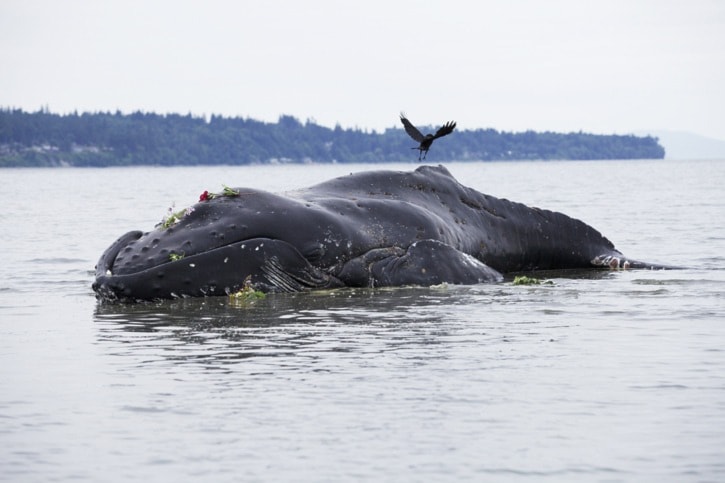There is no doubt starvation played a significant role in the death of a young humpback whale that beached itself on White Rock shores last week.
Stephen Raverty, a veterinary pathologist with the Ministry of Agriculture's Animal Health Centre, said Thursday that the animal was "quite severely emaciated," beyond what experts typically see in a migrating creature of its kind.
"Coming from Hawaii, we would anticipate some degree of weight loss, but this was over and above the normal physiologic changes; it was actually pathologic and quite severe."
The whale, a two- to three-year-old male, was found on White Rock's East Beach around 5 a.m. June 12. Entangled from head to tail fluke in fishing line, it died shortly after.
The incident caught the attention of several news outlets, and as word spread, drew hundreds of onlookers to the sandbar – with many of the early arrivals planning to try and help the whale get back out to sea.
After it succumbed, the interest was rooted more in curiosity, awe and a need to pay final respects.
Raverty said he never saw the whale in its entangled state; the lines were cut away by those first on the scene. He arrived on the beach that evening to conduct the post-mortem exam before Canadian Coast Guard officials towed the carcass off-shore.
Wounds that Raverty saw were consistent with those caused by rope, he said, and it was apparent the line "would have interfered with the ability of the animal to normally use its baleen to feed."
He said drag caused by the gear may also have caused the animal physical pain.
Testing is ongoing to determine if the whale had any pre-existing disease; results Raverty anticipates will be in by the end of next week.
Efforts are also ongoing to try and determine when the entanglement occurred, if it was the result of encountering more than one set of gear and where the gear originated; as well, to try and identify the creature through Pacific tail-fluke libraries.
Raverty said one positive of the situation was the opportunity to examine the whale so soon after its death. Often in such cases, the animal is found too far decomposed to fully assess its nutritional state at the time it actually succumbed.
Another positive is that others will also learn from the whale's demise. Its skeleton is to be rearticulated and displayed for education purposes at the whale interpretive centre in Telegraph Cove.
Paul Cottrell, a South Surrey resident and Pacific marine mammal co-ordinator for Fisheries and Oceans Canada, had told PAN that the decomposition process will take more than a year.
Raverty said a message the public can glean from the sad tale is the "very real risk" that derelict or abandoned ropes and nets pose for such animals. On the U.S. east coast, it is actually a significant cause of death that is affecting population numbers, he said.
